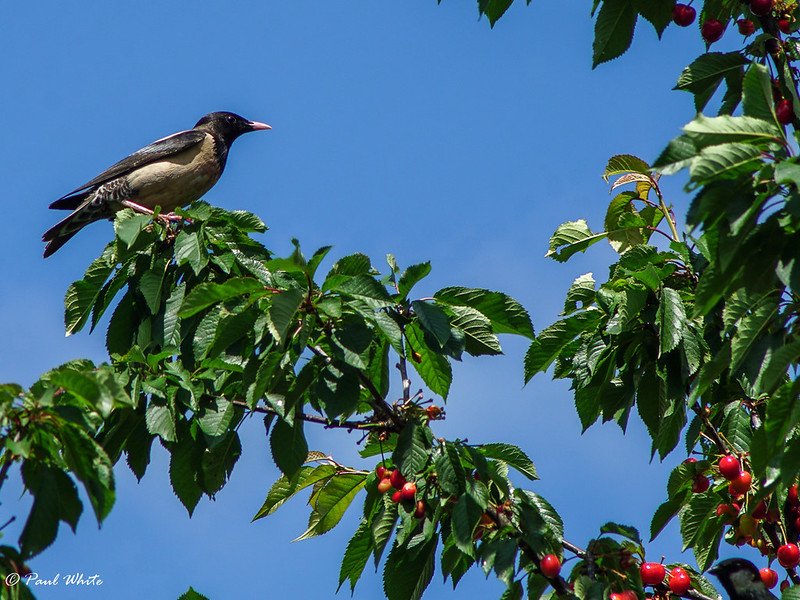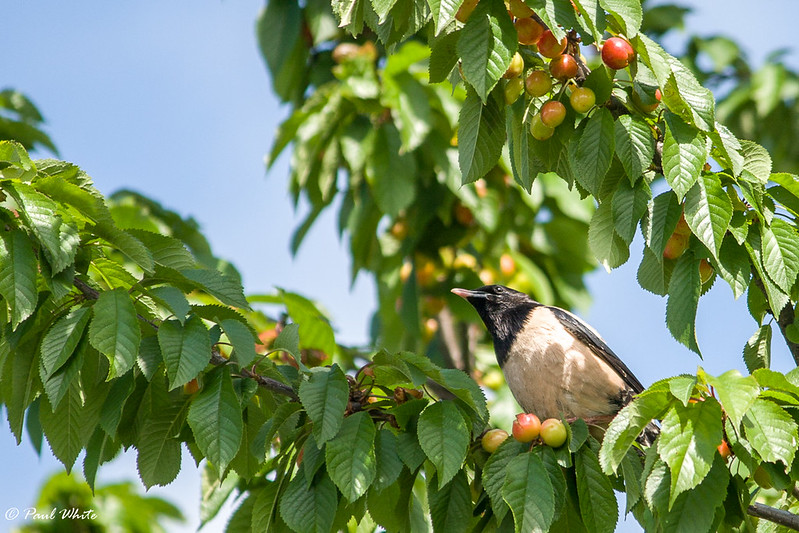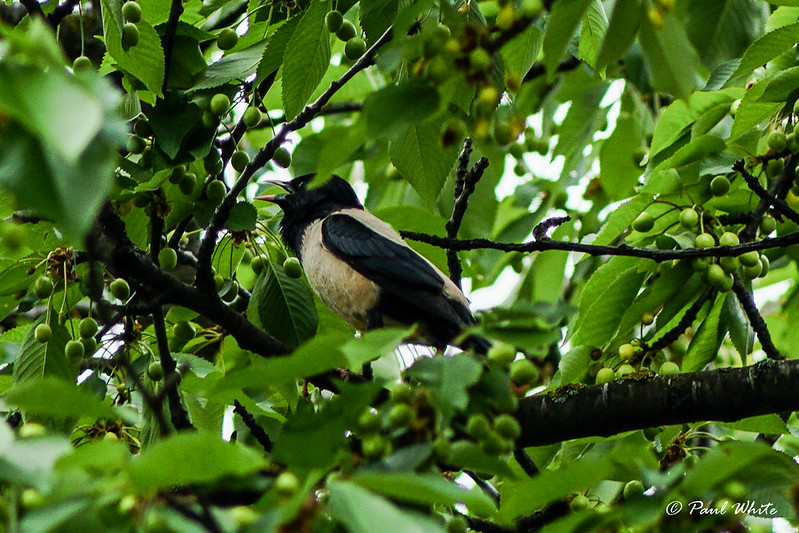by Paul White
Updated on June 2nd, 2020
I woke up to a tremendous noise outside the bedroom window. I knew that it was a flock of birds making the noise but they sounded very different to the usual native bird species that I am used to. So I popped outside with my camera to take a few photographs.

I didn't recognise these birds so I posted some of my photographs on Facebook to see if any of my friends could help me identify them. I had several responses and I was surprised to hear that they are a migratory bird called Rose-coloured starlings, because there was absolutely no rose coloured plumage.

After some further reading apparently their white feathers turn a pinky rose colour during the breeding season. They migrate from south Asia as far as eastern Europe, but they are more often seen in south eastern Romania.
A local conservationist informed me that there have only been four recorded sightings in Romania so far this year with one to seven individual birds at each sighting. There are approximately fifty birds visiting us daily which makes these encounters even more special.

These birds absolutely love cherries. They are feeding on them for most of the day and then disappear when light fades. I think they relocate to roost, but are always back first thing in the morning.
Updated on June 2nd, 2020
I woke up to a tremendous noise outside the bedroom window. I knew that it was a flock of birds making the noise but they sounded very different to the usual native bird species that I am used to. So I popped outside with my camera to take a few photographs.

I didn't recognise these birds so I posted some of my photographs on Facebook to see if any of my friends could help me identify them. I had several responses and I was surprised to hear that they are a migratory bird called Rose-coloured starlings, because there was absolutely no rose coloured plumage.

After some further reading apparently their white feathers turn a pinky rose colour during the breeding season. They migrate from south Asia as far as eastern Europe, but they are more often seen in south eastern Romania.
A local conservationist informed me that there have only been four recorded sightings in Romania so far this year with one to seven individual birds at each sighting. There are approximately fifty birds visiting us daily which makes these encounters even more special.

These birds absolutely love cherries. They are feeding on them for most of the day and then disappear when light fades. I think they relocate to roost, but are always back first thing in the morning.